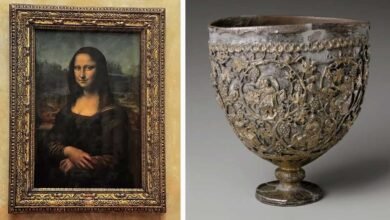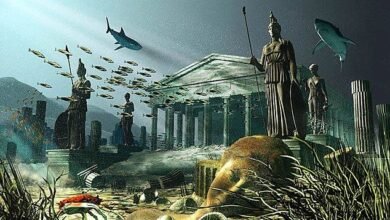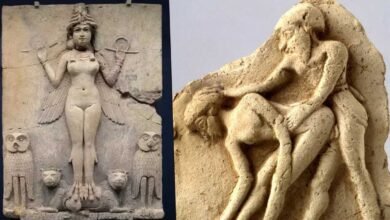
The ivories of the so-called Grado Chair are a collection of fourteen ivory panels that depict various scenes from the life of Christ, depictions of saints, and specifically, in the case you mentioned, Saint Menas with flanking camels. These ivories date from the 7th to the 8th century and are believed to have been made in the Eastern Mediterranean or Egypt.
The Grado Chair, as the name suggests, is associated with the city of Grado in Italy. It is uncertain how these ivory panels were originally used or arranged, but they may have been part of a liturgical throne. It is believed that Emperor Heraclius, who ruled from 610 to 641 AD, presented this throne to Grado after successfully re-conquering Egypt.

The Met’s exhibit examines Christian Byzantium and Islam as they first came into contact in the Middle East in the seventh to ninth centuries. This ivory carving is from what is known as the Grado Chair, a Christian artifact from the Eastern Mediterranean or Egypt in the seventh to eighth century.Reunion des Musees Nationaux/Art Resource, NY/The Metropolitan Museum of Art
The ivory depicting “Saint Menas with Flanking Camels” is inscribed in Greek as “Saint Menas.” Saint Menas, also known as Saint Mena, was an Egyptian Christian saint who lived during the early Christian period. According to tradition, he was a soldier in the Roman army who converted to Christianity and later became a hermit. The camels in the ivory panel likely reference a story associated with Saint Menas.
The hanging lamps depicted at his side are noted to be similar to Islamic mosque lamps, highlighting the cultural connections and influences in the Eastern Mediterranean region during this time.
These ivories are significant historical and artistic artifacts, representing the intricate craftsmanship and the cultural exchange between Byzantium and the Islamic world during the age of transition. They are part of the collection at The Metropolitan Museum of Art in New York and were featured in the exhibition “Byzantium and Islam: Age of Transition” in 2012.
Content from: https://www.metmuseum.org/art/collection/search/477165




